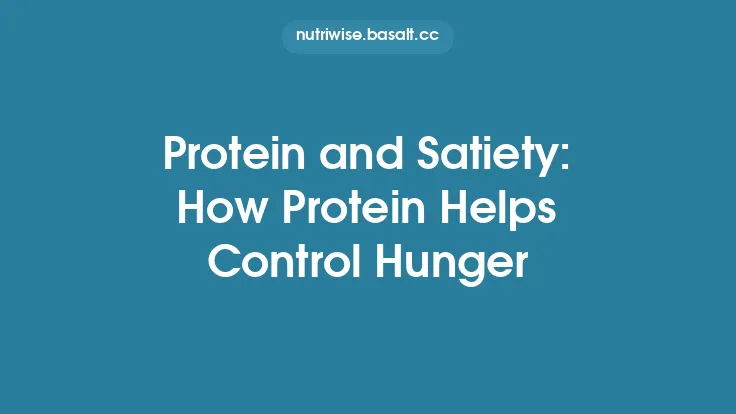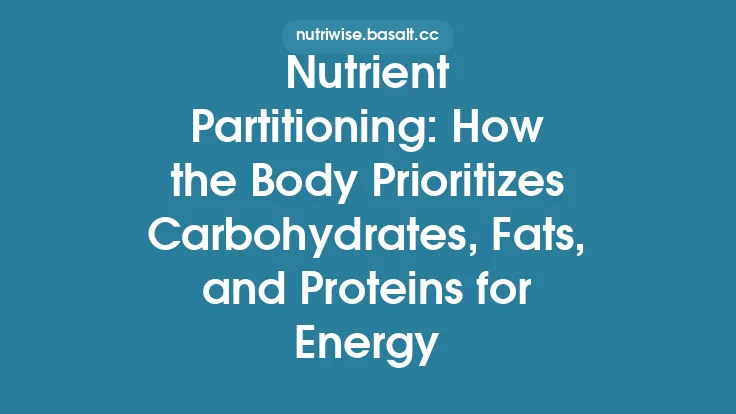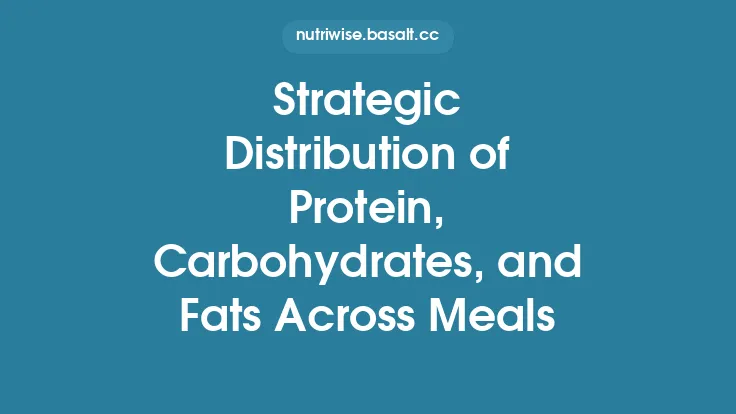Introduction
When it comes to feeling full, steady, and hormonally balanced, dietary fat often gets a bad rap. Many people think of fat merely as a calorie‑dense macronutrient to be minimized, yet the truth is far more nuanced. Fat is a powerful regulator of satiety signals, a modulator of hormones that control hunger, stress, and even reproductive function, and a substrate that the body processes differently depending on the time of day. By understanding how to distribute fat across your meals, you can harness its unique properties to stay satisfied longer, keep hormonal fluctuations in check, and support overall metabolic health.
Why Fat Influences Satiety
- Delayed Gastric Emptying
- Fat slows the rate at which the stomach empties its contents into the small intestine. This mechanical effect prolongs the presence of food in the stomach, sending stretch receptors a longer “full” signal to the brain.
- Release of Satiety Hormones
- Cholecystokinin (CCK): Fat‑stimulated I‑cells in the duodenum release CCK, which not only prompts the gallbladder to secrete bile but also acts on the vagus nerve to promote a feeling of fullness.
- Peptide YY (PYY): Fat ingestion triggers L‑cells to secrete PYY, a hormone that reduces appetite and slows gastrointestinal motility.
- Energy Density and Caloric Feedback
- Because fat provides 9 kcal g⁻¹ (more than double the energy of carbs or protein), the brain receives a stronger “energy‑sufficient” signal when a meal contains a moderate amount of fat, reducing the drive to continue eating.
- Neurotransmitter Precursors
- Certain fatty acids are precursors for neurotransmitters (e.g., omega‑3s for serotonin). Elevated serotonin levels are associated with improved mood and reduced emotional eating.
Hormonal Pathways Modulated by Dietary Fat
| Hormone | Primary Role | How Fat Affects It | Practical Implication |
|---|---|---|---|
| Leptin | Signals long‑term energy stores to the hypothalamus | Adequate dietary fat supports leptin sensitivity; low‑fat diets can blunt leptin signaling, leading to “leptin resistance.” | Include healthy fats to maintain leptin responsiveness, especially in weight‑maintenance phases. |
| Ghrelin | “Hunger hormone” that rises before meals | Fat‑rich meals suppress ghrelin more effectively than carb‑only meals, extending the post‑prandial satiety window. | Pair a modest amount of fat with protein at breakfast to curb mid‑morning cravings. |
| Insulin | Regulates glucose uptake; also influences appetite | While fat has a minimal direct impact on insulin secretion, it can blunt post‑prandial glucose spikes when combined with carbs, leading to smoother insulin dynamics. | Use fat to “smooth” high‑glycemic meals, reducing rapid insulin fluctuations that trigger hunger. |
| Cortisol | Stress hormone; chronic elevation can increase appetite and visceral fat | Omega‑3 fatty acids (EPA/DHA) have been shown to attenuate cortisol responses to stress. | Incorporate fatty fish or algae‑based EPA/DHA sources during high‑stress periods. |
| Sex Hormones (Estrogen, Testosterone) | Influence body composition, mood, and libido | Essential fatty acids are required for the synthesis of steroid hormones; low dietary fat can impair testosterone production in men and estrogen synthesis in women. | Ensure a baseline of 0.5–1 g kg⁻¹ body weight of total fat daily to support hormone production. |
Types of Fat and Their Satiety Profiles
| Fat Type | Typical Food Sources | Satiety Impact | Hormonal Highlights |
|---|---|---|---|
| Monounsaturated Fatty Acids (MUFA) | Olive oil, avocados, almonds, peanuts | Moderate to high; slows gastric emptying without excessive heaviness. | Improves insulin sensitivity; modestly raises leptin. |
| Polyunsaturated Fatty Acids (PUFA) – *Omega‑3* | Fatty fish, flaxseed, walnuts, chia seeds | High; omega‑3s especially enhance CCK and PYY release. | Lowers cortisol, supports testosterone/estrogen synthesis. |
| Polyunsaturated Fatty Acids (PUFA) – *Omega‑6* | Sunflower oil, corn oil, nuts | Moderate; excessive omega‑6 can promote inflammation if not balanced with omega‑3. | May influence prostaglandin pathways that affect appetite. |
| Saturated Fat | Butter, coconut oil, dairy fat, red meat | High satiety but can be heavy; may delay digestion longer than MUFA/PUFA. | In excess, may blunt leptin signaling; small amounts are fine for hormone synthesis. |
| Medium‑Chain Triglycerides (MCT) | Coconut oil, MCT oil supplements | Rapidly oxidized; provides quick energy while still delivering a satiety signal. | May increase ketone production, which can suppress ghrelin. |
Key Takeaway: For maximal satiety and hormonal balance, prioritize MUFA and omega‑3 PUFA sources, keep omega‑6 intake in check, and use saturated fat sparingly.
Strategic Placement of Fat in Meals
- Breakfast – “Satiety Anchor”
- Why: The morning is often the most vulnerable period for snacking. Adding a modest amount of fat (≈10–15 g) to a protein‑rich breakfast (e.g., eggs with avocado or Greek yogurt with nuts) blunts the early rise in ghrelin and sets a stable leptin baseline for the day.
- Mid‑Day Lunch – “Hormone Stabilizer”
- Why: A balanced lunch that includes 15–20 g of fat (e.g., olive‑oil‑dressed salad, salmon, or a handful of olives) helps moderate post‑prandial insulin spikes, reducing the “energy crash” that often leads to afternoon cravings.
- Afternoon Snack – “Cortisol Buffer”
- Why: Stress‑induced cortisol peaks can appear in the late afternoon. A small snack containing omega‑3‑rich fat (e.g., a few walnuts or a slice of smoked salmon) can dampen cortisol’s appetite‑stimulating effect.
- Dinner – “Evening Satiety & Hormone Support”
- Why: While we avoid deep discussion of sleep‑related metabolism, a dinner that includes 20–25 g of healthy fat (e.g., a drizzle of flaxseed oil over roasted vegetables or a serving of grass‑fed beef) sustains satiety through the night, preventing late‑night eating and supporting overnight hormone synthesis.
Practical Tip: Aim for a roughly even distribution of total daily fat across meals (≈25 % of daily fat at each main meal, the remainder in snacks). This pattern avoids large spikes that can overwhelm digestive capacity and keeps hormonal signals steady.
Chronobiology of Fat Metabolism
Research shows that the body’s ability to oxidize fat fluctuates over the 24‑hour cycle, largely driven by circadian rhythms in hormone secretion and enzyme activity.
- Morning: Higher sympathetic activity and elevated cortisol promote lipolysis (breakdown of stored fat) but also increase glucose utilization. Consuming a modest amount of dietary fat in the morning does not impede this process; instead, it provides a steady energy source while the body continues to mobilize its own fat stores.
- Mid‑Day: Insulin sensitivity peaks around midday, meaning the body can efficiently handle mixed meals that contain both carbs and fat. This window is ideal for incorporating a balanced amount of fat without compromising glucose control.
- Late Afternoon/Evening: Enzymes involved in chylomicron clearance (e.g., lipoprotein lipase) are more active later in the day, facilitating the transport of dietary fatty acids into peripheral tissues. This natural shift can be leveraged to ensure that the fat you consume in the evening is efficiently utilized rather than stored.
Implication: Aligning fat intake with these physiological peaks can improve metabolic efficiency and reduce the likelihood of excess fat storage.
Practical Recommendations for Daily Fat Distribution
| Goal | Suggested Fat Timing | Example Portion |
|---|---|---|
| Maximize Satiety | Include 10–15 g of fat at breakfast, 15–20 g at lunch, 20–25 g at dinner, plus 5–10 g in a snack | ½ avocado (≈12 g), 1 tbsp olive oil (≈14 g), 30 g almonds (≈15 g) |
| Support Hormonal Health | Prioritize omega‑3 sources at lunch or snack; keep total saturated fat <10 % of daily calories | 100 g salmon (≈2 g omega‑3), 1 tbsp flaxseed oil (≈7 g omega‑3) |
| Control Appetite During Stress | Add a small omega‑3‑rich snack mid‑afternoon | ¼ cup walnuts (≈18 g total fat, 2.5 g omega‑3) |
| Maintain Energy Balance | Pair fat with protein at each meal to slow digestion and stabilize blood glucose | 2 eggs + 1 tbsp butter (≈12 g fat) |
Additional Tips
- Use Whole‑Food Sources First: Whole nuts, seeds, olives, and fatty fish provide fiber, micronutrients, and bioactive compounds that enhance satiety beyond the fat alone.
- Mind the Cooking Method: Low‑heat sautéing with a measured amount of oil preserves the fatty acid profile; high‑heat frying can oxidize fats, creating compounds that may interfere with hormone signaling.
- Track Portion Sizes: Because fat is calorie‑dense, a kitchen scale or visual cue (e.g., a thumb‑sized amount of oil) helps avoid inadvertent overconsumption.
- Stay Hydrated: Adequate water intake supports the digestion of fat and the transport of satiety hormones through the bloodstream.
Potential Pitfalls and Common Misconceptions
- “All Fat Makes You Fat.”
- Reality: Fat is essential for hormone synthesis and satiety. Overeating any macronutrient can lead to weight gain, but moderate, well‑timed fat intake supports metabolic health.
- “Low‑Fat Breakfast Prevents Weight Gain.”
- Reality: Very low‑fat breakfasts often lack satiety, leading to higher overall daily caloric intake. A modest amount of healthy fat can actually reduce total daily calories by curbing snacking.
- “Only Saturated Fat Affects Hormones.”
- Reality: While saturated fat is a building block for steroid hormones, unsaturated fats (especially omega‑3s) have potent anti‑inflammatory and hormone‑modulating effects.
- “You Must Eat Fat on an Empty Stomach for Better Absorption.”
- Reality: Fat absorption requires bile and pancreatic enzymes, which are released in response to food intake. Consuming fat with other nutrients optimizes its digestion and utilization.
- “All Oils Are Equivalent.”
- Reality: The fatty acid composition matters. For example, extra‑virgin olive oil (high MUFA) offers different satiety and hormonal benefits compared to refined seed oils (high omega‑6).
Summary and Take‑aways
- Fat is a satiety powerhouse because it slows gastric emptying, triggers CCK and PYY, and provides a high‑energy signal to the brain.
- Hormonal health is tightly linked to fat quality and timing. Adequate intake of MUFA and omega‑3 PUFA supports leptin sensitivity, reduces ghrelin spikes, moderates cortisol, and supplies the raw material for sex‑hormone synthesis.
- Distribute fat evenly across meals (≈25 % of daily fat per main meal) to keep satiety signals and hormone fluctuations stable throughout the day.
- Match fat type to purpose: Use MUFA for everyday meals, omega‑3 for stress buffering and hormone support, and limit saturated fat to modest amounts.
- Leverage the body’s circadian rhythm by aligning higher-fat meals with periods of greater lipoprotein lipase activity (late afternoon/evening) and pairing modest fat with breakfast to curb early‑day hunger.
- Practical implementation involves simple food swaps—add avocado to toast, drizzle olive oil over salads, snack on a handful of nuts, and include fatty fish a few times per week.
By consciously timing and selecting your dietary fats, you can stay fuller longer, keep hunger hormones in balance, and lay a solid foundation for long‑term metabolic and hormonal health—without the need for drastic calorie restriction or complex meal‑planning schemes.





